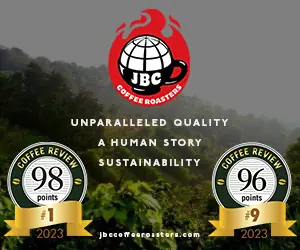What follows is a description of the various beverages that make up the espresso cuisines of the United States and Northern Italy.
Espresso. One-third (Italy) to two-thirds (United States) of a demitasse of espresso coffee, or 1 to 2 ounces, black, usually drunk with sugar.
Espresso Romano (United States; Italian-American). Espresso served with a twist of lemon on the side.
Espresso Ristretto (United States), Corto (Italy), Short (Pacific Northwest). The restricted or short espresso carries the "small is beautiful" espresso philosophy to its ultimate: The flow of espresso is cut short at about 3/4 ounce or less than a third of a demitasse (Italy) to 1 1/4 ounces or one-half of a demitasse (United States), producing an even denser, more perfumy cup of espresso than the norm.
Espresso Lungo (Italy, United States), Long (Pacific Northwest). A "long" espresso, filling about two-thirds or more of a demitasse. A term not much used in the United States, since most American espresso servings are already long by Italian standards.
Espresso con Panna. A single or double serving of espresso topped with whipped cream in a 6-ounce cup, usually topped by a dash of unsweetened chocolate powder.
Double (United States), Doppio (Italy). Double serving, or about 2 1/2 ounces (Italy) to 3 to 5 ounces (United States) of straight espresso, made with twice the amount of ground coffee as a single serving.
Cappuccino. One serving (about 1 1/4 ounces in Italy, up to 2 ounces in the United States) of espresso, topped by hot milk and froth. In the classic Italian-American cuisine, a good cappuccino consists of about one-third espresso, one-third milk, and about one-third rather stiff foam, in a heavy 6-ounce cup. In Italy, the milk is not frothed as thoroughly as in the United States, and is presented as a heavier, soupy foam that picks up and combines with the espresso, rather than floating on top of it, as is often the case with the lighter, drier froth typical of American production. The hot, frothed milk is always added to the coffee in the cappuccino. Like most espresso drinks, the cappuccino is usually drunk with sugar.
This popular drink is often customized, both in the United States and in Italy. It is not unusual to hear an Italian order a cappuccino senza spuma, "without froth," and Americans versed in the ways of Seattle-style espresso have the option of ordering their cappuccino wet, with very little froth, or dry, with mostly hard, bouyant froth and little milk.
Caffe Latte, Latte (United States). In the United States, one or two shots of espresso and about three times as much hot milk, in a big bowl or wide-mouthed glass, topped with a short head of froth. Caffe latte has a greater proportion of milk to coffee than a cappuccino does, and tastes weaker and milkier. Strictly speaking, the milk and coffee should be poured simultaneously, from either side of the bowl or glass.
Such combinations of hot milk and coffee have long been the favored breakfast drink of southern Europeans, although the term caffe latte itself appears to be little used in Italy, where those who want a breakfast coffee with more milk than froth usually order a latte macchiato, or perhaps a cappuccino without foam. In fact, a sure way to reveal that you are an American in Italy is to order a cappuccino after lunch, or a caffe latte at any time. In the United States, caffes often distinguish between caffe latte (made with espresso) and café au lait, which substitutes ordinary American filter coffee for the espresso.
Espresso Macchiato. A serving of espresso "stained"’ (macchiato) with a small quantity of hot, frothed milk. Served in the usual espresso demitasse.
Latte Macchiato. A glass filled with hot frothed milk, into which a serving of espresso has been slowly dribbled. The coffee colors, or stains, the milk. In both Italy and the United States, this drink is presented with a relatively short head of froth. Note that in the cappuccino, the milk and froth are added to the coffee, in the caffe latte they are poured simultaneously into a large bowl or glass, mixing them, while in the latte macchiato, the espresso is poured into the milk and froth, creating a layered effect as viewed through the serving glass.
Caffe Mocha (United States). Not to be confused with Mocha Java, a traditional American-roasted blend of Mocha and Java coffees. In the classic Italian-American espresso cuisine a caffe Mocha is one serving (ideally 1 1/4 ounces) of espresso, mixed with about 2 ounces of very strong hot chocolate, topped with hot frothed milk. The milk is added last, and the whole thing is usually served in an 8-ounce mug. With a classic mocha the hot chocolate is made very strong, so it can hold its own against the espresso and milk. With increasing frequency American caffes simply add chocolate fountain syrup to a caffe latte and call it a Mocha. So be it. The Mocha does not appear on Italian espresso menus, although the drink is probably based on various coffee-chocolate drinks once popular in Northern Italy.










